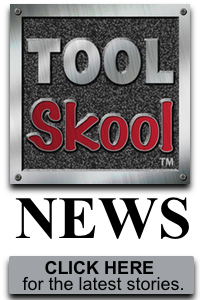Jigsaw Blade Overview
In 1947, an employee of Bosch Power Tools and Accessories invented the jigsaw by replacing a needle in his wife’s sewing machine with a makeshift saw blade.
Since then, an ever-increasing number of saw blades are being introduced each year but, one thing remains consistent; quality blades designed for a specific cutting application will produce smooth and safe cuts more consistently.
Blades generally come in three different configurations:
- Straight – I think this is fairly self-explanatory.
- Curved – Teeth are set back from the front of the blade and often will incorporate two different types of teeth to help cut on both the up and down strokes. These blades are usually thinner to allow for a tighter radius.
- Plunge Cuts – Armed with a hook at the top of the blade, this helps the blade find purchase to create a cut in the material whereby the blade can be sunk and continue cutting.
Shank Configurations:
There are two primary shank configurations; u-shank (universal) and the t-shank. The u-shank is the older of the two and is held in place with a hex drive screw. The t-shank is by far the most common product used today as it offers better blade retention and keyless clamping allowing the blade to be ejected without having to touch it. This is a real safety feature as the blade gets very hot after prolonged use.
Today, most jigsaws will accept either type of blade. But, if you have an older jigsaw that only accepts one type of shank and don’t want to part with it, Starrett Tools has a Unified Shank that will fit any saw. It has a unique profile that emulates the t-shank design but also features a hole that will accommodate the u-shank saw.
While general purpose blades still have their place, end-users are finding more application specific purposes for their jig saws. This too has spawned a need for blades designed to withstand the stress exerted on the blade and continue to provide value by increasing the lifetime of the blade.
Advanced Saw Blade Technology:
Saw blades must also keep up with the changing dynamics of the tools themselves. Today, saws come equipped with more power and lighter batteries that last longer, which results in higher blade speeds and increased blade temperature.
These tools are now able to perform more heavy-duty applications, such as heavy metal cutting, that were traditionally left to machine shops. Blades must be taller and thicker than standard blades in order to withstand these tough applications. The teeth in most cases are also optimized for maximum cutting capability. In this area, speed is still important, but lifetime of the blade becomes a more important feature.
Most tool manufacturers are also designing their tools to reduce fatigue, limit vibration, and decrease noise for end-users. Blade technologies will follow suit by optimizing different aspects of the blade, such as blade geometries, heights, thicknesses, tilt angles, TPI (Teeth Per Inch) configurations and tooth settings to optimize for the application.
For example, Bosch’s Progressor® technology continually changes the TPI from the shank to the tip of the blade to effectively and efficiently cut thin and thick materials with one blade. The number of teeth increases as the blades move up toward the saw. The larger teeth near the bottom end of the blade are more aggressive for cutting thick stock, while teeth at the center of the blade are ground for speed of cut and to produce a clean cut. The teeth nearest the saw are finer for cutting thin stock.
Bosch has also patented a new tooth geometry, which in effect pairs two TPIs over the entire length of the blade. This gives the user the benefit of both TPIs, giving the ability to increase speed, but maintaining smoothness of cut, low vibration and more control.
One company that has a unique approach to jigsaw blades is Spyder Tools. Their scary sounding Skeleton Jigsaw Blade, deviates from the norm in a number of ways. According to the company, “Spyder Skeleton jigsaw blades feature parallel-cut, gill-shaped notches that are designed to dissipate frictional heat. This unique blade shape also creates a rectangular channel, allowing for highly precise cuts while maintaining superior blade durability.”
Summary:
While most folks will scrutinize the purchase of the tool, it is the blade that does most of the work. Proper blade selection will help increase the life of the tool to provide maximum benefit.





